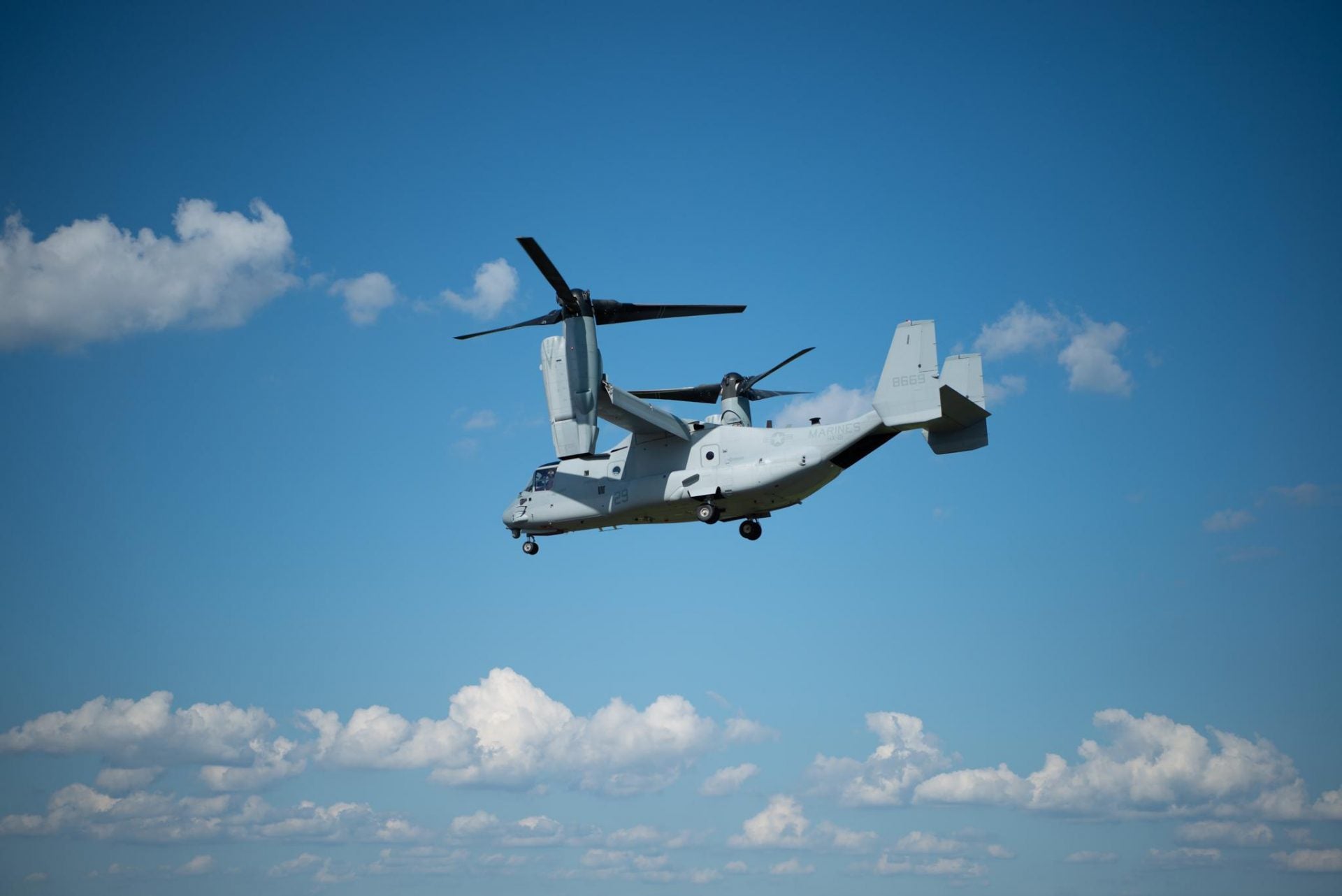
The US Marine Corps’ (USMC) MV-22B Osprey tiltrotor aircraft has conducted the first flight with AN/ALQ-231 (V)4 Intrepid Tiger II (IT II) electronic warfare (EW) weapon system.
It represents the beginning of the payload’s developmental flight testing.
During the flight, the IT II (V)4 EW pod was internally mounted as the aircraft has no traditional wing stations to externally mount podded payloads.
US Navy Airborne Electronic Attack (AEA) Systems (PMA-234) programme manager captain Michael Orr said: “The significance of this developmental test flight was two-fold.
“Not only was this the first time we’ve integrated the Intrepid Tiger II capability onto an Osprey but also the first time the capability has been incorporated internal to a platform.”
The weapon system’s revised design comprises a ‘roll-on/roll-off rack-mounted payload, controlled from a laptop in the aircraft cabin’.
How well do you really know your competitors?
Access the most comprehensive Company Profiles on the market, powered by GlobalData. Save hours of research. Gain competitive edge.

Thank you!
Your download email will arrive shortly
Not ready to buy yet? Download a free sample
We are confident about the unique quality of our Company Profiles. However, we want you to make the most beneficial decision for your business, so we offer a free sample that you can download by submitting the below form
By GlobalDataIt features open architecture-compliant design and easily expandable hardware and software to help fulfil current and future threats.
The (V)4 system design will include advanced upgrades, using government and commercial-off-the-shelf (COTS) technologies, as well as jammer techniques that will enable the USMC to keep pace with the ‘ever-evolving threats’ on the battle ground.
It can be controlled both from the cockpit and by a ground operator.
US Marine Corps V-22 Joint Program Office colonel Brian Taylor said: “The fielding of this upgrade provides a significant and incremental improvement in the V-22’s organic electronic warfare capability, providing commanders more options to support our Marine Corps ground forces.
“This improves both operational safety to our aircrews and operational success to the commander, our ultimate goals in everything we do.”
Post the integration on the MV-22B, the IT II team will further expand the V4 design to include a counter-radar capability on the KC-130J aircraft.
NAVIAR noted that the IT II (V)4 is expected to start fleet deliveries for the MV-22B in FY-2023 to achieve initial operating capability (IOC) by the end of FY24.
IT II (V)1 was flown on the AV-8B Harrier, F/A-18 A++/C/D Hornets, and KC-130J aircraft while the UH-1Y Huey helicopter flew with IT II (V)3.







